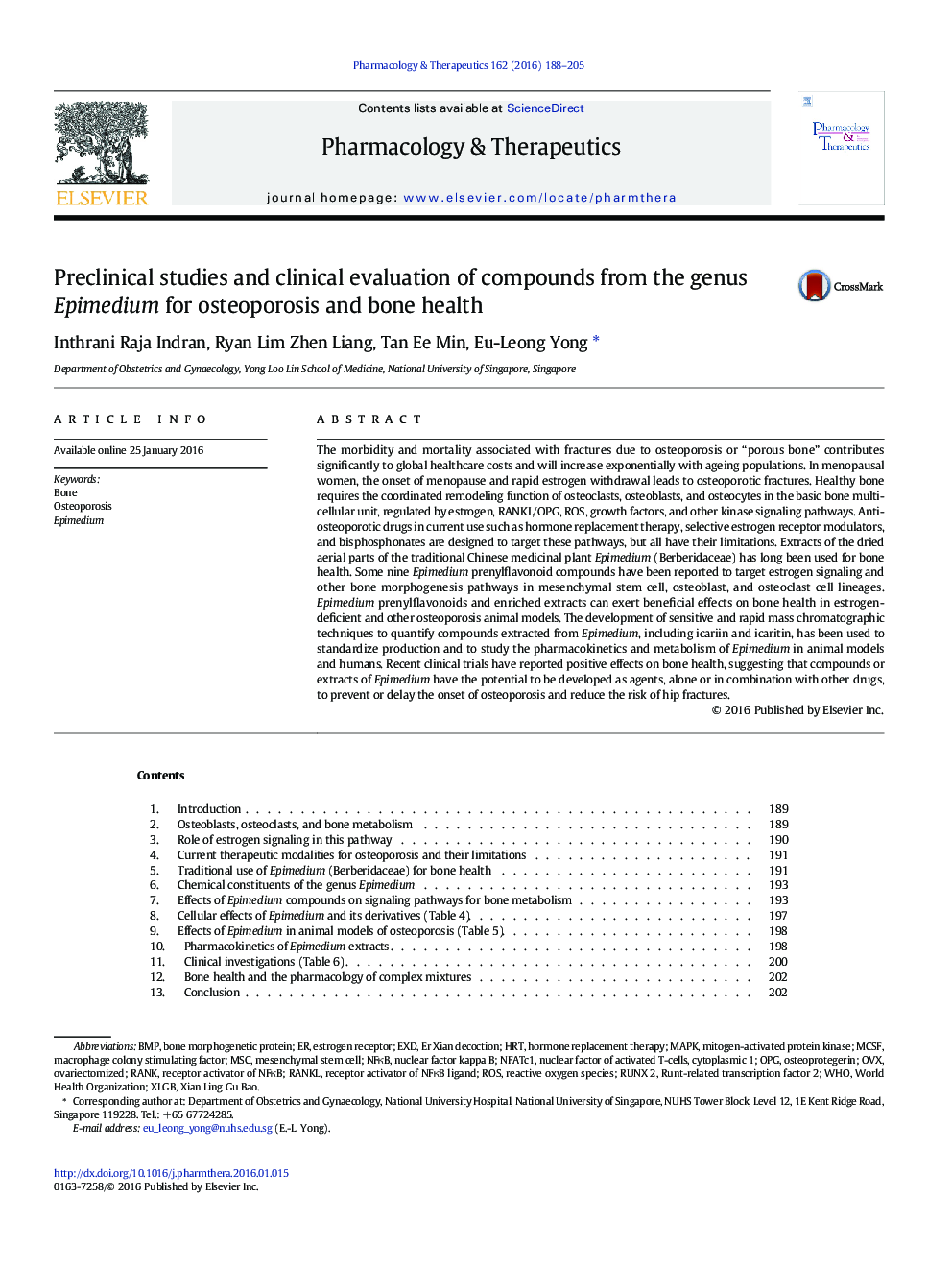| Article ID | Journal | Published Year | Pages | File Type |
|---|---|---|---|---|
| 2563083 | Pharmacology & Therapeutics | 2016 | 18 Pages |
The morbidity and mortality associated with fractures due to osteoporosis or “porous bone” contributes significantly to global healthcare costs and will increase exponentially with ageing populations. In menopausal women, the onset of menopause and rapid estrogen withdrawal leads to osteoporotic fractures. Healthy bone requires the coordinated remodeling function of osteoclasts, osteoblasts, and osteocytes in the basic bone multicellular unit, regulated by estrogen, RANKL/OPG, ROS, growth factors, and other kinase signaling pathways. Anti-osteoporotic drugs in current use such as hormone replacement therapy, selective estrogen receptor modulators, and bisphosphonates are designed to target these pathways, but all have their limitations. Extracts of the dried aerial parts of the traditional Chinese medicinal plant Epimedium (Berberidaceae) has long been used for bone health. Some nine Epimedium prenylflavonoid compounds have been reported to target estrogen signaling and other bone morphogenesis pathways in mesenchymal stem cell, osteoblast, and osteoclast cell lineages. Epimedium prenylflavonoids and enriched extracts can exert beneficial effects on bone health in estrogen-deficient and other osteoporosis animal models. The development of sensitive and rapid mass chromatographic techniques to quantify compounds extracted from Epimedium, including icariin and icaritin, has been used to standardize production and to study the pharmacokinetics and metabolism of Epimedium in animal models and humans. Recent clinical trials have reported positive effects on bone health, suggesting that compounds or extracts of Epimedium have the potential to be developed as agents, alone or in combination with other drugs, to prevent or delay the onset of osteoporosis and reduce the risk of hip fractures.
